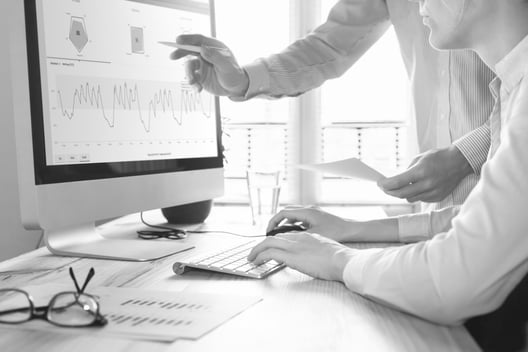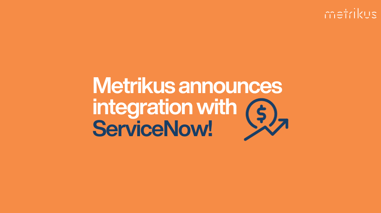Meet Metrikus' customers | Testimonials
By Jack Rhodes, Business Operations Manager, Metrikus
The needs of our customers are always changing and, of course, the world has changed so much in the last 18 months. But what I’ve noticed is that a lot of the time, people don't really know what they need until they start using our platform. With every single customer, we have endeavoured to give them the flexibility to start using the platform, to find out what’s great and to realise how it could be better for them specifically.
We’re a very collaborative company, both internally and externally. We really welcome client feedback and facilitate regular touchpoints to get it: in fact, it’s in everyone’s interest to say what they need because another customer might not even realise that it’s something they need, too.
Here I wanted to put a spotlight on some of those collaborations to show how our brand new, next generation platform – really is the culmination of all the conversations, projects and tweaks we’ve made in conjunction with our customers over the years.
We now understand that seeing everything in one place is fantastic, but it isn’t enough. With our new platform, we have a different focus: making sure that that data can be successfully utilized, through providing actionable insights.
Wellness Kiosk
Let’s start with a stalwart of the Metrikus platform: the Wellness Kiosk. We built this in conjunction with GlaxoSmithKline (GSK) as they wanted to be able to demonstrate to their employees that their work space was being looked after and that they were providing good indoor air quality (IAQ). They also wanted to be able to display this at multiple locations within their site in India.
We really appreciated the collaboration we had with GSK for the Wellness Kiosk, as we worked through various different prototypes and demonstrations of what the product looked like before we came to a final design. Since then we've been able to expand the Kiosk to other clients who have also found the benefit of being able to see that information at a glance.
Another client, FORE Partnership, also wanted to use Kiosk Mode in a way that differed to previous clients. FORE wanted to easily display their Kiosk to visiting clients so they could see how easy it was to access the data being displayed. It was the use case that we had never planned for, but once they said that that was something that they wanted to do, we tested the method they wanted to use internally to make sure that everything could work and guided them through the setup process so that it would all work smoothly.
To jump back on the timeline a little: before the Wellness Kiosk, there was the Capacity Kiosk. This came about as a result of similar issues faced by multiple clients: they were struggling with a way to actually know when spaces were at capacity, whether or not it was safe to re-enter a space, how many people were in a certain meeting room – issues like that. We gathered these problems from various customers, and it was a conglomeration of all these different ideas and issues which then manifested itself into the original Kiosk View, which we then built upon in our project with GSK. This is a great example of how our products are born out of ideas and needs from all different people, and they continue to develop into something even better.
Footfall Panel
We worked with a large global investment back extensively to create elements in the platform that would really work best for them specifically. The best example is the Footfall Panel. We knew that the bank wanted to monitor the lift lobbies within a particular site as they wanted an easy way to report on the number of people re-entering the site. This was to ensure that they had the correct lift operating procedures in place to prevent overcrowding in the lobbies whilst reducing the number of lifts running. The problem was that previously this had to be done manually, using some of our charts and would take someone an hour or more to complete.
We looked at this issue and created the Footfall Panel which could shorten that process by 75%, if not more. This was really important for them because they were doing a daily report on those comings and goings. In the end, we not only made the solution that originally gave them access to the data, but we continued to work with them and make iterative improvements, finding out their processes, and delivering them that product which we now know is also of interest to many other people, too.
We’re very hands on because we want to create products that really help our customers, not things that are just the tip of the iceberg. Once we've implemented a solution it’s really important for us to find out how a customer has actually used it and what they think is missing. We want to know, now that you’re using this, how would you use it beyond what we initially discussed? It's often through those conversations that we then identify areas for improvement. For example, I mentioned how the Wellness Kiosk was developed with GSK, and how we’ve since made further changes to it since working with FORE Partnership and others, which just shows the importance of these conversations.
Rapid prototyping
Sometimes customers have problems that we can’t immediately fix. This was the case with another major bank. Initially, we didn't have the full tool set required to solve their problem when we implemented our solution at their site, but we didn’t want to just leave the situation there.
To tackle this, we effectively pulled data directly from the platform to rapidly prototype what they might need. This made sure that the bank got all the information they needed for their business case, and were able to use that to prototype what would work for them. Once we had made some decisions on what was needed, we were then able to blend that back into the platform in the following couple of months, so that the bank could then access those solutions within the platform, and other customers with similar requirements.
Back to basics
Our work with FORE Partnership has been really constructive, as the focus has been stripping back to basics in the most accessible way possible. FORE told us that they sometimes found it challenging to interpret all the different dials at a glance – our thinking that more data was better clearly didn’t work for them!
So our team took that on board, stripped back the front screen and then moved the other information back to the analytics side of the pages to try and increase the ease of use.
In fact, a lot of people aren't really sure about what kind of data they will get until they start using the platform, so we’re sure to work closely with our clients during the first three months of the partnership. This way, we can ensure they’re getting exactly what they need in the most accessible way. All of this information then feeds into the product roadmap.
Working in a different way
With the Met Office, it was less about building something specific and more about facilitating a different experience. They came to us saying that they really wanted to try and find a way to be able to reutilize the sensors that they already had in their office to monitor CO2 in their meeting rooms, as they wanted to check that the ventilation was still working correctly.
We had to work out exactly how we could deploy those sensors, reconfigure the dashboards, and be on hand to support them as they moved everything around themselves: essentially, we were helping them to maximize the use of the system in a way that they hadn't previously considered.
The great thing about Metrikus being in the centre of it all, talking to real life customers with wildly different needs, is that we get a full view of what the toolbox could be. So the fact that we're sitting there knowing that, actually, we've got hammers and screwdrivers and a drill that our disposal – that being because we work with excellent partners such as Disruptive Technologies and VergeSense and Awair – means we can literally pick the right kinds of tools for the job, which you wouldn't be able to do if you were speaking to one of those sensor providers. Being able to put that toolbox together for people is what sets us apart, instead of customers having to figure it out for themselves.
Metrikus – the product of creative collaboration
All of this is to say that these varied and valuable collective learnings about our existing platform have all coloured how we want our next generation platform to work. It’s helped us answer questions like: how do we want to make sure that it's easily accessible from day one? How do we do it so that anyone, anywhere could basically pick up the solution and find the data they need really, really quickly? I really celebrate the generosity of our customers in sharing what they love and what they need from Metrikus because it has helped us to develop a platform that’s unlike anything else on the market right now.




